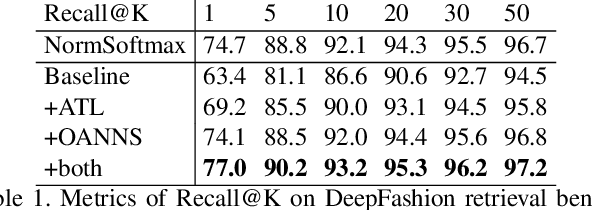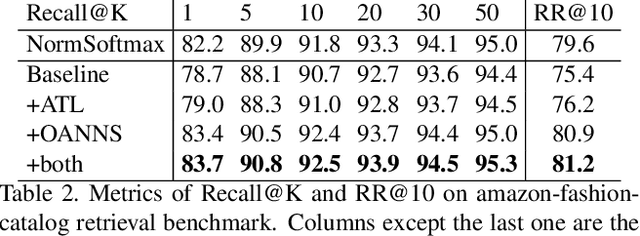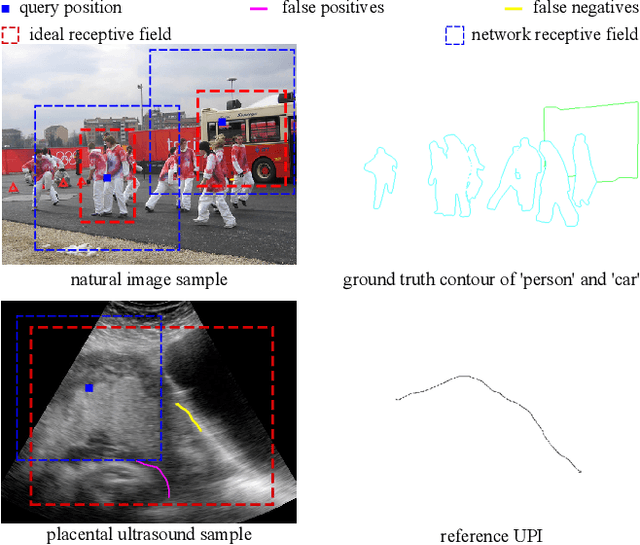Huan Qi
A weakly supervised adaptive triplet loss for deep metric learning
Sep 27, 2019


Abstract:We address the problem of distance metric learning in visual similarity search, defined as learning an image embedding model which projects images into Euclidean space where semantically and visually similar images are closer and dissimilar images are further from one another. We present a weakly supervised adaptive triplet loss (ATL) capable of capturing fine-grained semantic similarity that encourages the learned image embedding models to generalize well on cross-domain data. The method uses weakly labeled product description data to implicitly determine fine grained semantic classes, avoiding the need to annotate large amounts of training data. We evaluate on the Amazon fashion retrieval benchmark and DeepFashion in-shop retrieval data. The method boosts the performance of triplet loss baseline by 10.6% on cross-domain data and out-performs the state-of-art model on all evaluation metrics.
UPI-Net: Semantic Contour Detection in Placental Ultrasound
Sep 13, 2019



Abstract:Semantic contour detection is a challenging problem that is often met in medical imaging, of which placental image analysis is a particular example. In this paper, we investigate utero-placental interface (UPI) detection in 2D placental ultrasound images by formulating it as a semantic contour detection problem. As opposed to natural images, placental ultrasound images contain specific anatomical structures thus have unique geometry. We argue it would be beneficial for UPI detectors to incorporate global context modelling in order to reduce unwanted false positive UPI predictions. Our approach, namely UPI-Net, aims to capture long-range dependencies in placenta geometry through lightweight global context modelling and effective multi-scale feature aggregation. We perform a subject-level 10-fold nested cross-validation on a placental ultrasound database (4,871 images with labelled UPI from 49 scans). Experimental results demonstrate that, without introducing considerable computational overhead, UPI-Net yields the highest performance in terms of standard contour detection metrics, compared to other competitive benchmarks.
 Add to Chrome
Add to Chrome Add to Firefox
Add to Firefox Add to Edge
Add to Edge